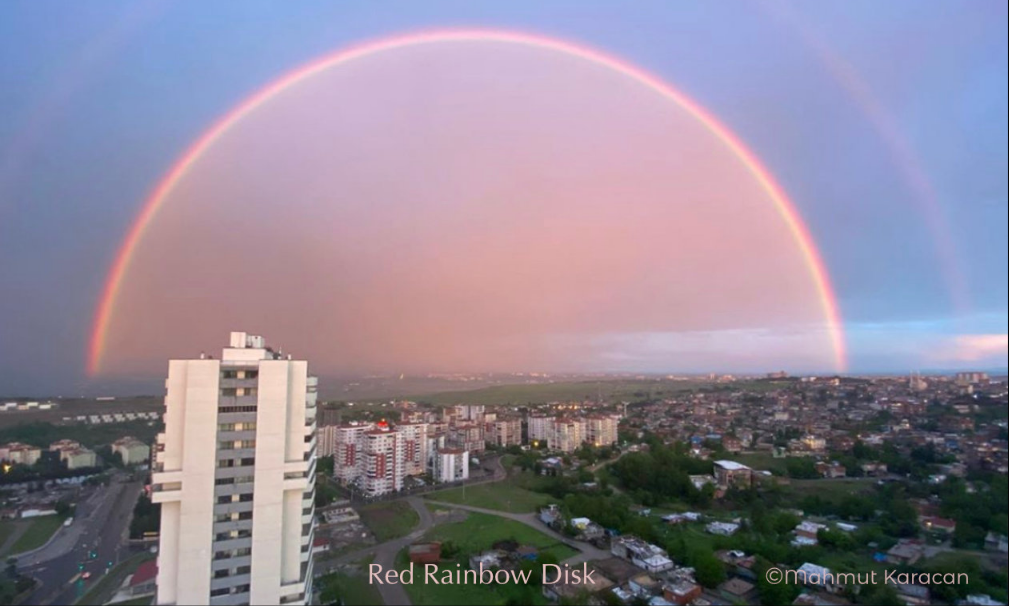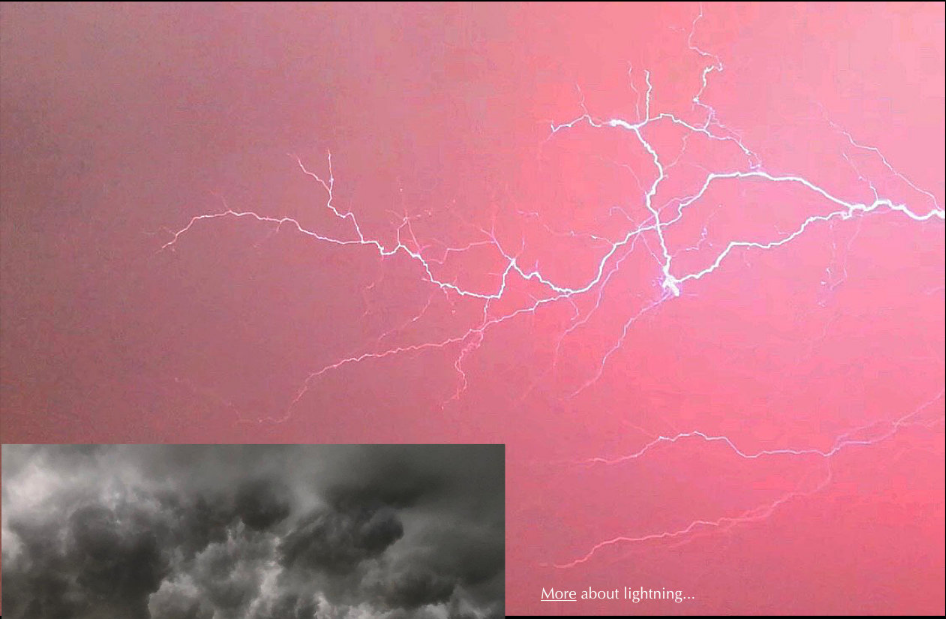Red rainbow disk - All rainbows are disks
Red Rainbow Disk - Exploring the Phenomenon of Rainbow Disks
Rainbows have always fascinated us with their vibrant colors and ethereal beauty. We often picture rainbows as arcs stretching across the sky, but did you know that all rainbows are actually disks? In this article, we will delve into the intriguing concept of rainbow disks, focusing on the mesmerizing phenomenon of the red rainbow disk.
The Red Rainbow Disk in Diyarbakir, Turkey
Imagine a day in Diyarbakir, Turkey, where the sky is filled with ominous black clouds, foretelling an impending storm. As lightning illuminates the sky and rain begins to fall, something extraordinary happens – a red rainbow appears. Mahmut Karacan, a witness to this breathtaking event, describes it as an amazing experience.
The Semicircular Shape and the Sun's Position
The shape of a rainbow can vary depending on the position of the sun in relation to the observer. In the case of the red rainbow in Diyarbakir, it appears almost semicircular. This is because the sun is near to setting, causing the bow to be high in the sky. When the sun is low, sunset rays have a longer path through the atmosphere. As a result, these rays are highly reddened, while blue light is preferentially scattered away by air molecules and fine dust/aerosol.
Unveiling the Mystery of Rainbow Disks
Now, let's unravel the mystery of rainbow disks. All primary rainbows actually form disks, but we tend to notice the disk more when its color contrasts with the sky. When the sun is higher in the sky, the disk appears white and blends in with the brightness of the surrounding sky inside the bow.
The Contrast of Colors
The vibrant red color of the rainbow disk against the dark sky creates a striking contrast that captivates our attention. This contrast is a result of the specific atmospheric conditions present during the formation of the red rainbow. The scattering of blue light and the reddening of sunset rays contribute to this captivating visual display.
The Science Behind Rainbow Disks
To understand the science behind rainbow disks, we need to delve into the principles of light refraction and reflection. When sunlight passes through raindrops in the atmosphere, it undergoes refraction, causing the different colors of light to separate. As this refracted light reflects off the inside surface of the raindrop, it forms a circular arc of colors that we perceive as a rainbow.
Exploring the Phenomenon of Red Rainbows
Red rainbows are a rare and enchanting occurrence. They occur when sunlight passes through raindrops at a low angle, causing a greater amount of red light to be refracted and reflected back towards the observer. This concentration of red light creates the vibrant red hue that distinguishes red rainbows from their more commonly observed counterparts.
The Beauty of Nature's Spectacles
Witnessing a red rainbow disk is a reminder of the extraordinary beauty that nature has to offer. It serves as a testament to the intricate workings of our atmosphere and the interplay between light and water droplets. Such captivating spectacles remind us of the wonders that surround us and inspire awe and appreciation for the world we inhabit.
A Glimpse into Atmospheric Optics
The study of atmospheric optics provides valuable insights into the phenomena that occur in our atmosphere. From rainbows and halos to mirages and atmospheric scattering, these phenomena offer a fascinating window into the behavior of light in our atmosphere. Exploring these optical wonders allows us to deepen our understanding of the natural world and appreciate the intricate mechanisms at play.
Conclusion
In conclusion, all rainbows are actually disks, with their shape varying depending on the position of the sun. The red rainbow disk, such as the one witnessed in Diyarbakir, Turkey, captivates us with its vibrant color and striking contrast against the dark sky. By understanding the principles of light refraction and reflection, we can appreciate the science behind rainbow disks and the captivating phenomenon of red rainbows. Nature's spectacles, such as these, remind us of the beauty that surrounds us and the wonders waiting to be explored in our atmosphere.

Mahmut Karacan saw this at Diyarbakir, Turkey. "It was an amazing day. First black clouds appeared like an apocalypse. After that lightning with rain. Then we had this red rainbow."
The bow is almost semicircular because the sun is near to setting. When the sun is low, bows are high. Sunset rays have a long path through the atmosphere and are highly reddened
due to blue light being preferentially scattered away by air molecules and fine dust/aerosol.
But why a red disk? All primary rainbows are disks. We notice a bow's disk more when - like here - its colour contrasts with the sky. When the sun is higher the disk is white and then shows up as brighter sky inside the bow.


Note: this article has been automatically converted from the old site and may not appear as intended. You can find the original article here.
Reference Atmospheric Optics
If you use any of the definitions, information, or data presented on Atmospheric Optics, please copy the link or reference below to properly credit us as the reference source. Thank you!
-
<a href="https://atoptics.co.uk/blog/red-rainbow-disk-all-rainbows-are-disks/">Red rainbow disk - All rainbows are disks</a>
-
"Red rainbow disk - All rainbows are disks". Atmospheric Optics. Accessed on November 26, 2024. https://atoptics.co.uk/blog/red-rainbow-disk-all-rainbows-are-disks/.
-
"Red rainbow disk - All rainbows are disks". Atmospheric Optics, https://atoptics.co.uk/blog/red-rainbow-disk-all-rainbows-are-disks/. Accessed 26 November, 2024
-
Red rainbow disk - All rainbows are disks. Atmospheric Optics. Retrieved from https://atoptics.co.uk/blog/red-rainbow-disk-all-rainbows-are-disks/.